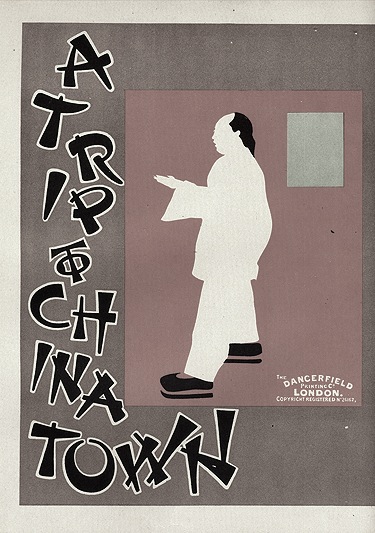TYPE DESIGN INFORMATION PAGE last updated on Sat Jun 22 21:55:38 EDT 2024
FONT RECOGNITION VIA FONT MOOSE
|
|
|
|
Mandarin
Faux Chinese font from the Cleveland Type Foundry (1883). It has many digital interpretations: Linotype, Mandarin D by URW, and an Elsner&Flake typeface in 1985. Paul Shaw notes: The one 19th-century typeface with an unmistakably Asian name and a suggestive appearance is Chinese (Cleveland Type Foundry, 1883). Known since the mid-'50s as Mandarin, the typeface is characterized by curved and pointed wedge strokes that superficially resemble two of the eight basic strokes of Chinese calligraphy: the downward left stroke and the upward right stroke. Unfortunately, the strokes, forced onto the armature of Roman letters, are assembled in a manner that completely ignores a calligraphic emphasis on structural balance and harmony. Mandarin is the granddaddy of what have come to be known as "chop suey" types. It's a fitting name-just as chop suey is an American invention, so, too, are the letters of Mandarin and its many offspring. Neither the food nor the fonts bear any real relation to true Chinese cuisine or calligraphy. But this has not prevented the proliferation of chop suey lettering and its close identification with Chinese culture outside of China. Mandarin was used by the Beggarstaff Brothers (William Nicholson and James Pryde) for their 1899 poster "A Trip to Chinatown." The poster was included in Les Maîtres de l'Affiche, the enor-mously influential monthly publication showcasing the most beautiful posters of the fin de siècle. By the end of World War I, chop suey lettering had become synonymous with San Francisco's Chinatown. This may have been due to the influence of the Beggarstaff poster, or it could have been a way to distinguish the rebuilding of Chinatown as a tourist destination following the 1906 earthquake. The new Chinatown was flamboyantly, theatrically "Chinese," complete with pagoda roofs and other exaggerated and stylized details. |
EXTERNAL LINKS |
| | |

file name: Beggarstaff Brothers William Nicholsonand James Pryde usedavariantof Mandarinintheir1899poster A Tripto Chinatown
| | |
|
Luc Devroye ⦿ School of Computer Science ⦿ McGill University Montreal, Canada H3A 2K6 ⦿ lucdevroye@gmail.com ⦿ http://luc.devroye.org ⦿ http://luc.devroye.org/fonts.html |

